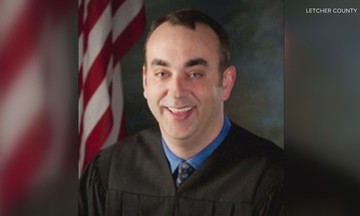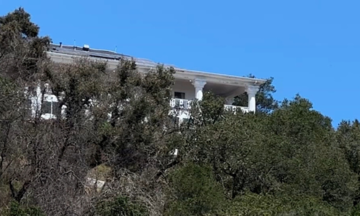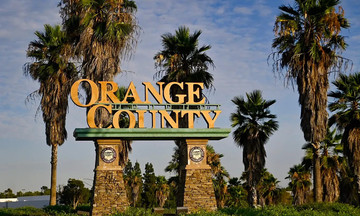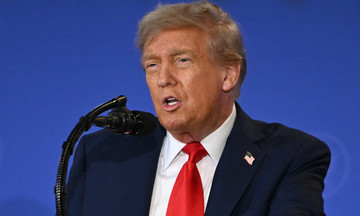News of Shaolin Temple abbot Shi Yongxin's investigation on 27/7/2025 has sent shockwaves through China. Shi Yongxin is accused of criminal offenses, embezzlement, and misappropriation of temple funds from various projects. He is also accused of serious violations of Buddhist precepts, having long-term illicit relationships with multiple women, and fathering children.
Calls to the registered business numbers of companies linked to Shaolin Temple have gone unanswered. Chinese media outlets are extensively reporting on the business empire Shi Yongxin built since taking over the temple's management.
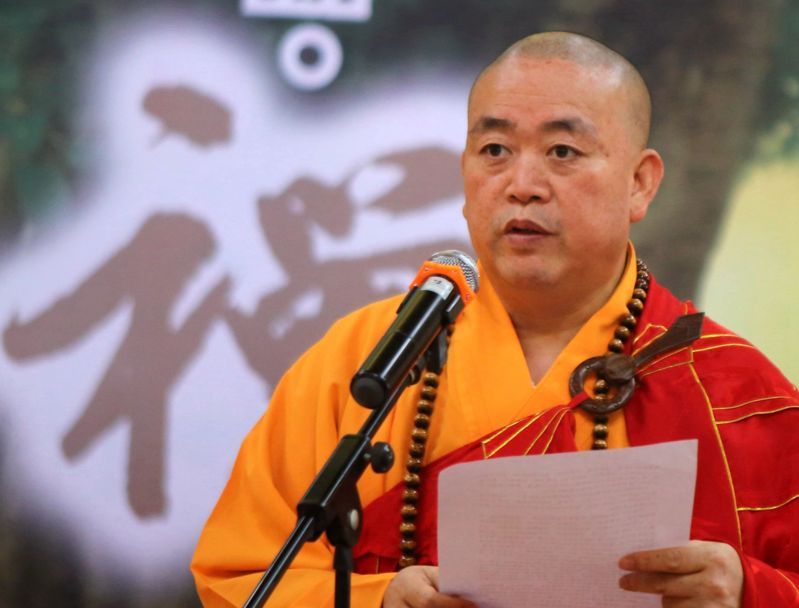 |
Shaolin Temple abbot Shi Yongxin. Photo: CNS |
Shaolin Temple abbot Shi Yongxin. Photo: CNS
Shi Yongxin, born Liu Yingcheng in 1965 to a farming family in Fuyang City, Anhui Province, arrived at Shaolin Temple in Songshan, Dengfeng, Zhengzhou, Henan Province, in 1981 as a 16-year-old seeking martial arts training during China's qigong and martial arts boom of the 1980s.
Back then, Shaolin Temple was isolated, overgrown, and difficult to reach, with a dilapidated entrance and only a dozen monks over the age of 70. The scene was a far cry from the "supreme martial arts sanctuary" depicted in novels and films.
Liu Yingcheng became a disciple of the 29th abbot, Venerable Shi Xingzheng, receiving the Dharma name "Yongxin," becoming the temple's youngest monk.
At 19, Shi Yongxin joined the temple's management board, becoming its director at 22, effectively taking the reins of Shaolin Temple.
The 1982 film "Shaolin Temple," with tickets costing a mere 0.1 CNY, became a box office sensation, grossing 160 million CNY (22.4 million USD), giving the temple a taste of the "attention economy." Shi Yongxin's arrival revolutionized Shaolin Temple's operational philosophy.
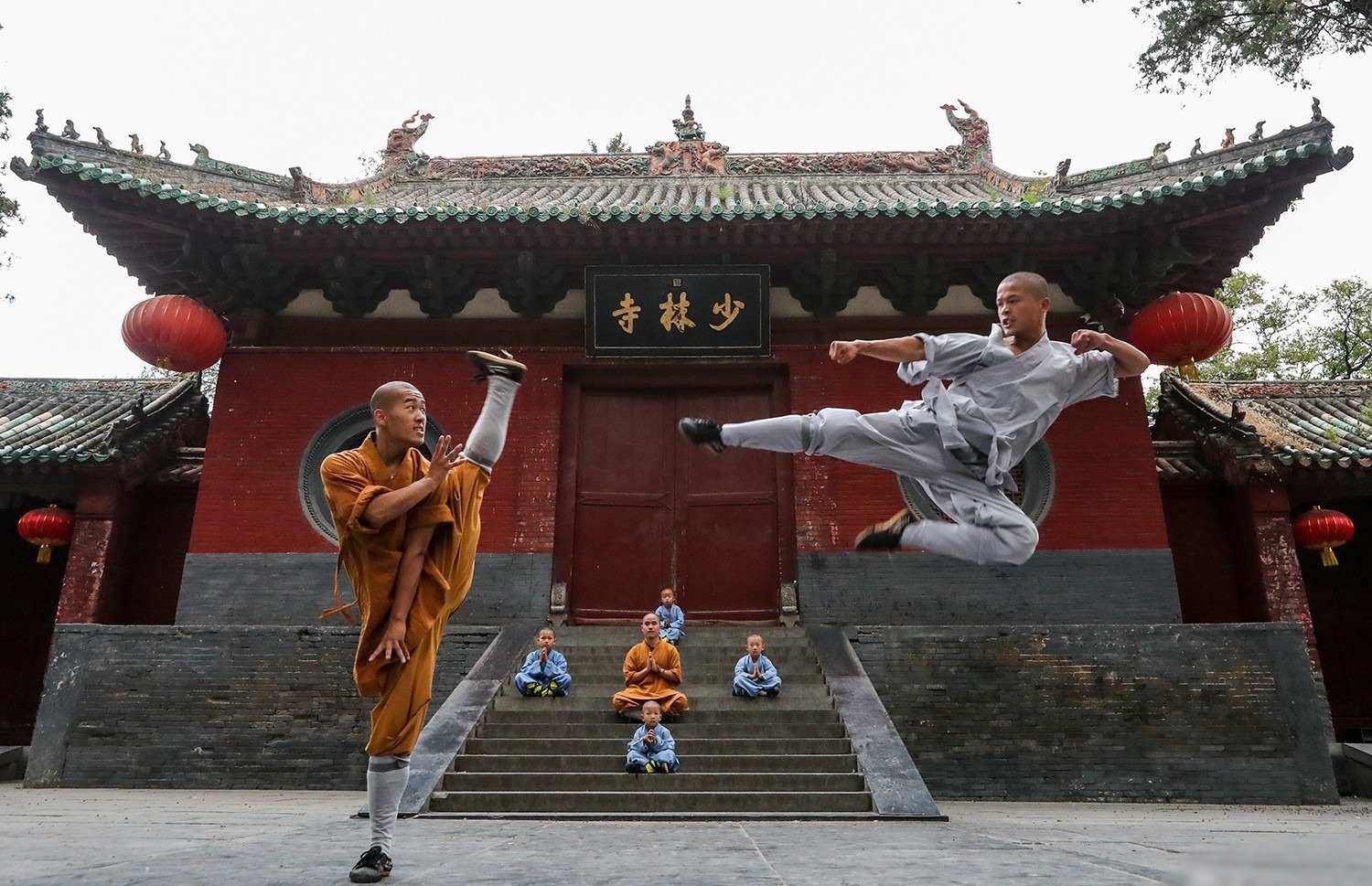 |
Warrior monks demonstrating martial arts at the Shaolin Temple gate in 2018. Photo: Cpanet |
Warrior monks demonstrating martial arts at the Shaolin Temple gate in 2018. Photo: Cpanet
Before Shaolin Temple's commercial expansion, fake "Shaolin warrior monks" and counterfeit "Shaolin products" were rampant globally. In 1994, Shi Yongxin's lawsuit against the "Shaolin Temple Sausage" brand for copyright infringement became China's first religious copyright case.
This victory highlighted the importance of brand protection, leading to the temple systematically registering trademarks.
With the rise of the internet in 1996, Shi Yongxin registered a domain name and created a website for Shaolin Temple, making it one of the first digitally engaged religious institutions. Besides temple activities, the website featured scriptures like the Yi Jin Jing and Xi Sui Jing, attracting martial arts enthusiasts worldwide.
In 1997, Shi Yongxin established Henan Shaolin Industrial Development Co., Ltd., the first company within Chinese Buddhism. Shaolin Temple's business portfolio then expanded into culture, food, medicine, apparel, and other sectors, building a multi-industry ecosystem through trademark registration and international expansion.
Shi Yongxin's justification for commercializing Shaolin Temple was simple: "Even monks need to eat." He is seen as both a monastic and a successful entrepreneur, a "CEO in robes."
Henan Shaolin Intangible Assets Management Co., Ltd., established in 2008 and wholly owned by Shaolin Temple with registered capital of 1 million CNY (140,000 USD), is central to this commercialization.
This company invests in over 10 others, covering cultural and martial arts exchanges, performances, exhibitions, intangible asset management, tourism, and import-export.
Cultural tourism is the primary revenue source. Performances like the "Zen Shaolin Music Grand Ceremony" are a major draw. In 2010, Shaolin Temple's tourism revenue accounted for one-third of Dengfeng City's total budget revenue.
According to Songshan tourism data, ticket sales reached 350 million CNY (49 million USD) in 2017, with additional experiences generating over 120 million CNY (16.8 million USD). In 2019, visitor numbers peaked at 4.2 million. Assuming an average spend of 300 CNY per person, total tourism-related revenue exceeded 1.2 billion CNY (168 million USD).
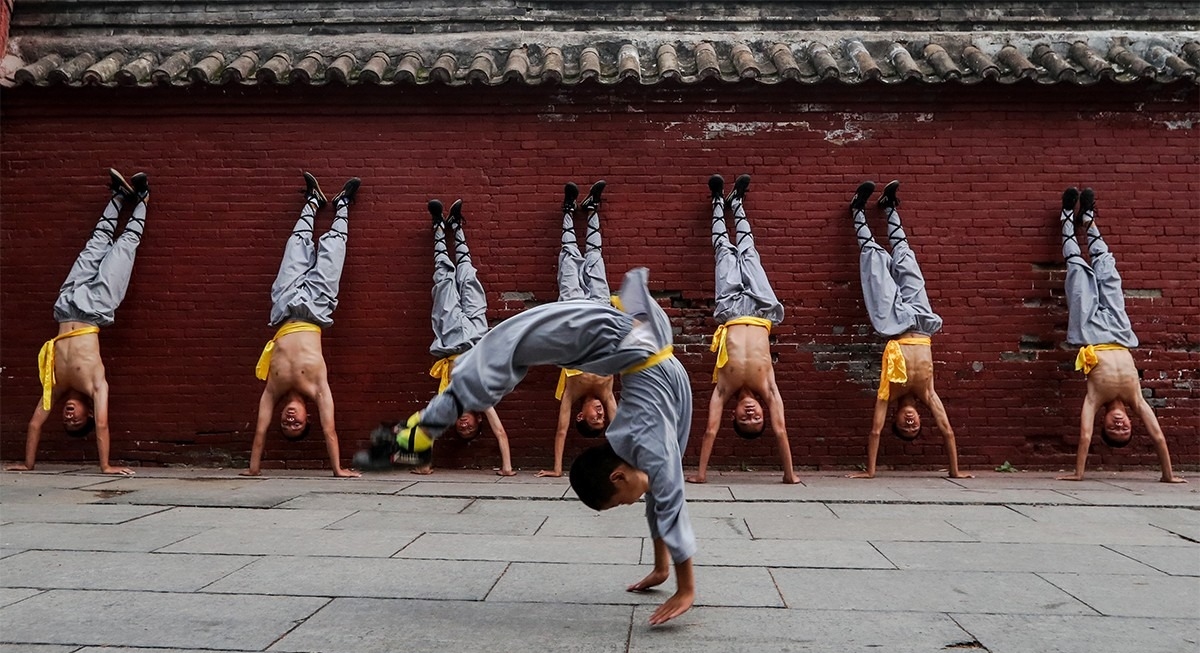 |
Shaolin warrior monks practicing handstands. Photo: Cpanet |
Shaolin warrior monks practicing handstands. Photo: Cpanet
Health and wellness are a recent focus. According to Lidi Finance, the Shaolin Pharmacy Bureau (a traditional medicine center) revived by Shi Yongxin in 2003, has developed products like Huoguo balm and lingzhi tea based on secret recipes. Prices range from tens to thousands of CNY. In 2019, the center's revenue surpassed 80 million CNY (11.2 million USD).
Shi Yongxin then ventured into e-commerce and new retail. The Taobao store "Shaolin Happy Land," launched in 2008, initially sold items like prayer beads and meditation cushions. In 2015, it rebranded as a "cultural lifestyle brand," offering products like Zen incense and Shaolin-themed souvenirs, boosting annual revenue from a few million to 23 million CNY (3.22 million USD) by 2020.
In 2021, Shaolin Temple joined Douyin (TikTok's Chinese version). Shi Yongxin's account gained over 10 million followers in six months, and his first livestream generated 5 million CNY (700,000 USD) in sales.
Shi Yongxin also expanded internationally. Warrior monks performed at Buckingham Palace in 1999. They now tour globally over 200 times a year, with per-show revenue rising from 100,000 USD to nearly 500,000 USD in recent years.
Shaolin Temple has explored innovative revenue streams: licensing online games, partnering for Shaolin music development, and even auctioning "blessed" phone numbers from China Unicom.
Regarding intellectual property, data from the China National Trademark Office shows Shaolin Temple filed 706 trademark applications by 2022, covering instant food, lighting, hospitality, jewelry, beverages, and sanitary equipment.
 |
Shaolin warrior monks sparring at the Pagoda Forest within the temple. Photo: Cpanet |
Shaolin warrior monks sparring at the Pagoda Forest within the temple. Photo: Cpanet
However, commercial success has brought a crisis of faith. As ticket prices rise and temple-linked companies bid vast sums for commercial land, the public questions whether this "sacred space" is now profit-driven.
While Shi Yongxin claimed commercialization aims to spread Buddhism and protect the temple's heritage, the vast profits and extensive business activities raise doubts.
In 2015, a self-proclaimed former disciple, Shi Zhengyi, published "Who will supervise the big tiger Shi Yongxin, abbot of Shaolin Temple?" The article alleged Shi Yongxin's involvement with multiple women, possession of two ID cards, and embezzlement. An investigation found some allegations unsubstantiated and others lacking evidence.
In 2022, Henan Tiesong Digital Technology Co., Ltd., a Shaolin-linked company, won a Zhengzhou land bid for 452 million CNY (63.3 million USD). Shaolin Temple later withdrew as a shareholder, but suspicions about its real estate ventures persist.
Currently, of the companies invested in by Shaolin's intangible asset management firm, 7 remain active, 8 are dissolved, and one had its license revoked.
The latter is Shaolin Zhongyue Cultural Industry Development Co., Ltd., established in 2014, whose business scope included cultural industry investment, cultural facility construction, project introduction, and real estate development.
Shi Yongxin once stated that Chan Buddhism teaches "seeing through and letting go; everything arises from the mind, a pure mind leads to a pure land, a peaceful mind leads to a peaceful world. Managing one's mind well is the greatest contribution to society, humanity, oneself, and family." But as the business empire beneath his robes grows, blurring the lines between faith and finance, people question whether he has truly let go.
Hong Hanh (According to iFeng)



